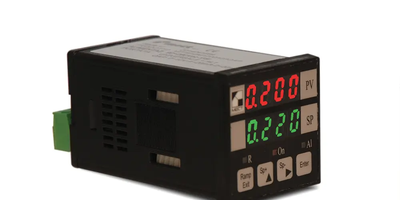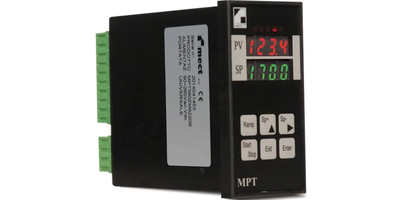Controller with multiple inputs and outputs to connect input sensors and other devices to change the room temperature: air conditioners, fans, dehumidifiers.
Thermoregulator

Temperature controller (mA, V, J, K, S, PT100) with dual disply in 48x48; 1 alarm; Analog and serial output.

Temperature controller (mA, V, J, K, S, PT100) with dual display in 48x96; 2 alarms; Analog and serial output.
Industrial temperature controllers are instruments to be integrated into machines in order to control and regulate temperature. They consist of controllers with different inputs and outputs, so as to connect input sensors, in order to measure, and other instruments that serve to change the temperature of the environment, such as air conditioners, fans, dehumidifiers.
Temperature control is essential in applications in many industries, whether producing machines for the food sector (where failure to maintain the correct temperature would jeopardize the nutritional properties of products), for the chemical and pharmaceutical sectors, for metallurgy (think of the importance of a temperature controller for ovens), for mechanical engineering, for plastics, or for medical (e.g., a temperature controller for an incubator). Every industrial sector needs control with humidity regulators and temperature controllers, precisely and efficiently in the different machines that are used.
Industrial temperature controllers come in different sizes, such as the common 48x48 and 48x96, and have at least one display, but often two. Temperature controllers communicate with resistance thermometers, thermocouples and analog inputs. Programmable from the keypad, through management software, they have "soft-start" and "selftuning" functions to automatically acquire temperature control parameters. Depending on the models, different programs can be followed in order to adjust valves, resistance thermometers, thermocouples. The outputs are different according to industrial needs.
Although automation in industry has increasingly used the PLC, since the last decades of the last century, a temperature controller is capable of performing many functions apparently not directly related to temperature control, can perform logical functions, sequences, activate functions, while costing less than a Plc. A Plc for the sole purpose of temperature control would also require higher costs due to the use of more resources, requiring a more powerful processor.

